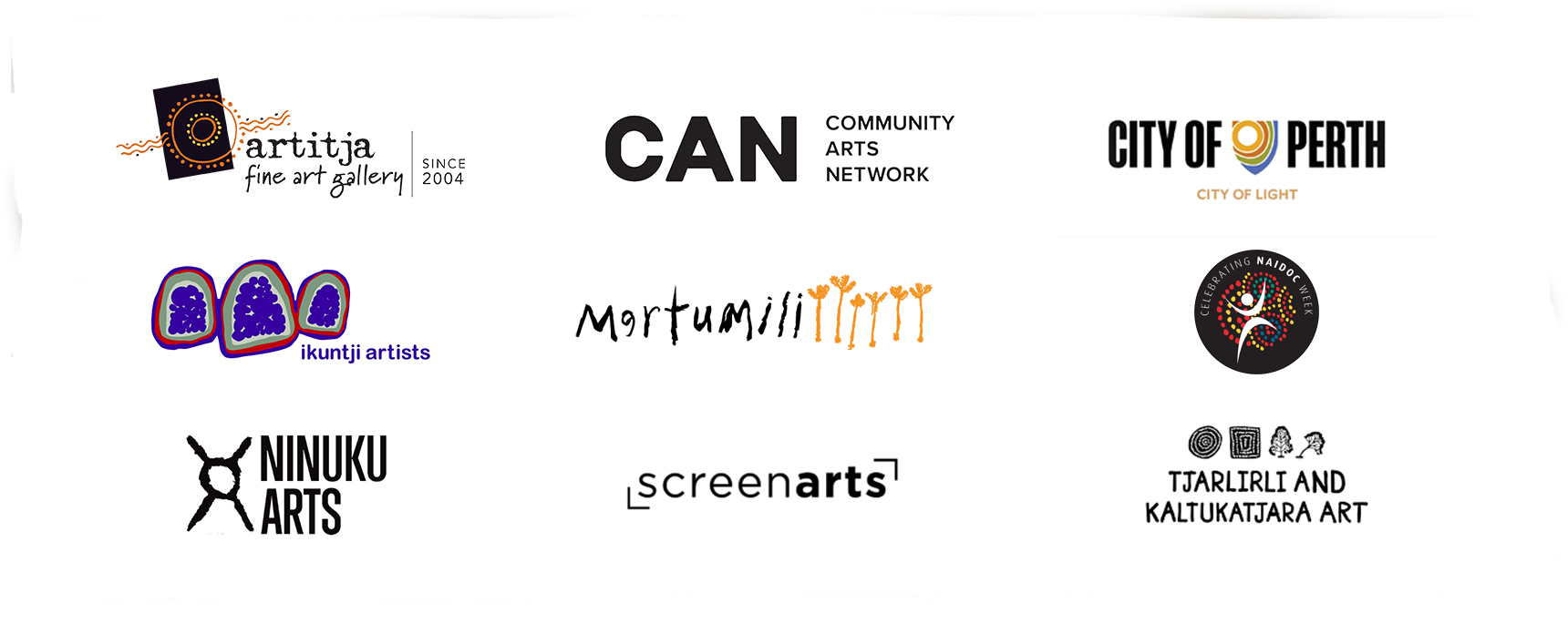THE CITY OF PERTH URBAN SCREENS PRESENT
GOOLOGOOLUP NAIDOC SCREENINGS 2024
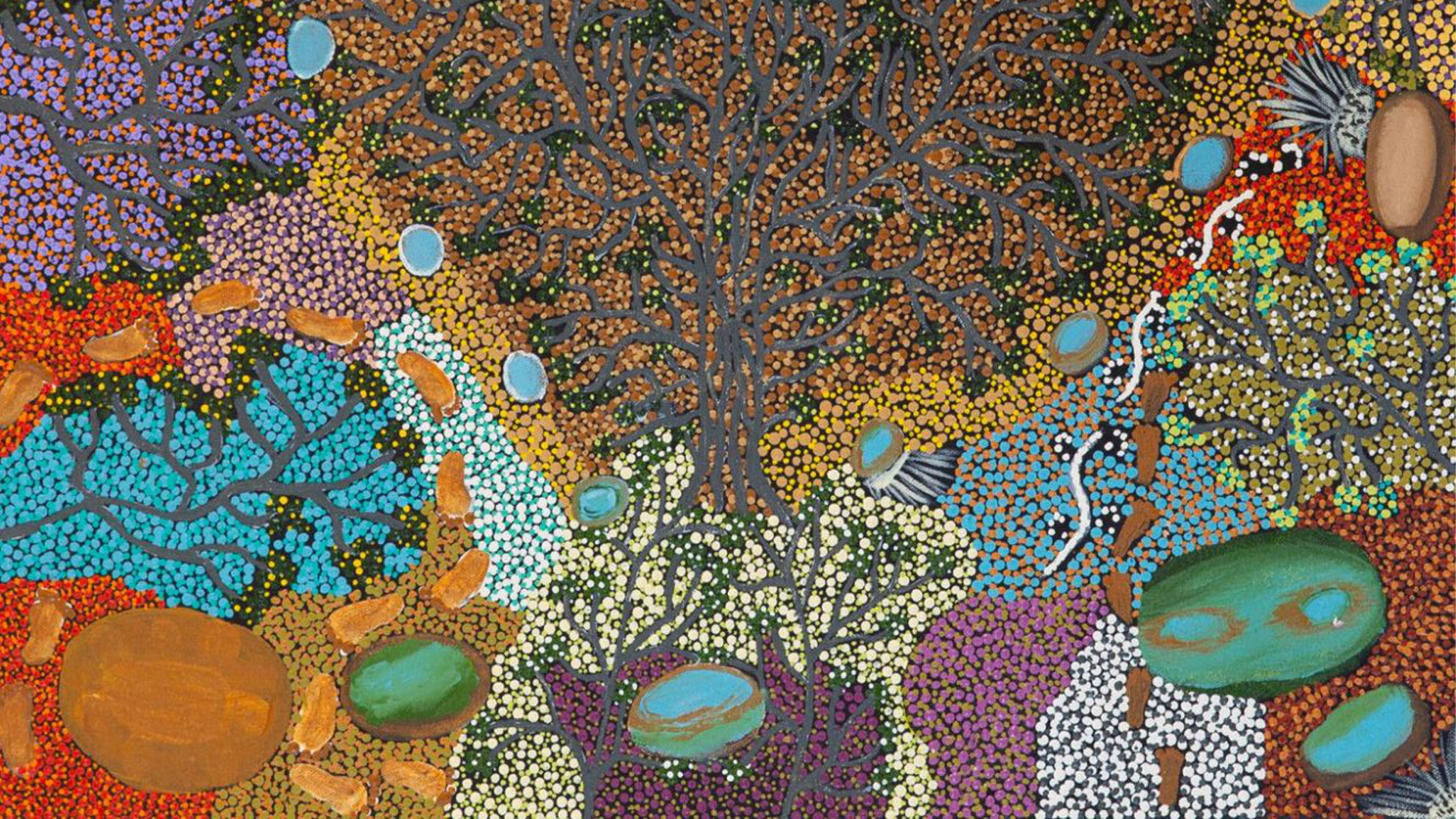
INDIGENOUS ART ON THE SCREENS
Northbridge Piazza superscreen + Forrest Place Arts Screen
7 – 25 July
FREE
The City of Perth Northbridge Piazza Superscreen in collaboration with Artitija Fine Art Gallery, Community Arts Network, Ikuntji Artists, Martumili Artists, Ninuku Arts, and Tjarlirli and Kaltukatjara Art present a multi-week program of Indigenous Art on the Northbridge Piazza and Forrest Place Screens in celebration of NAIDOC Week.
This incredible schedule of Indigenous art and culture features film, sculpture and painting from communities across Australia.
Image credit:
Sandalwood Tree and Bush Medicine (2024), Noreena Kadibil
Image courtesy of Martumili Artists
EXHIBITIONS
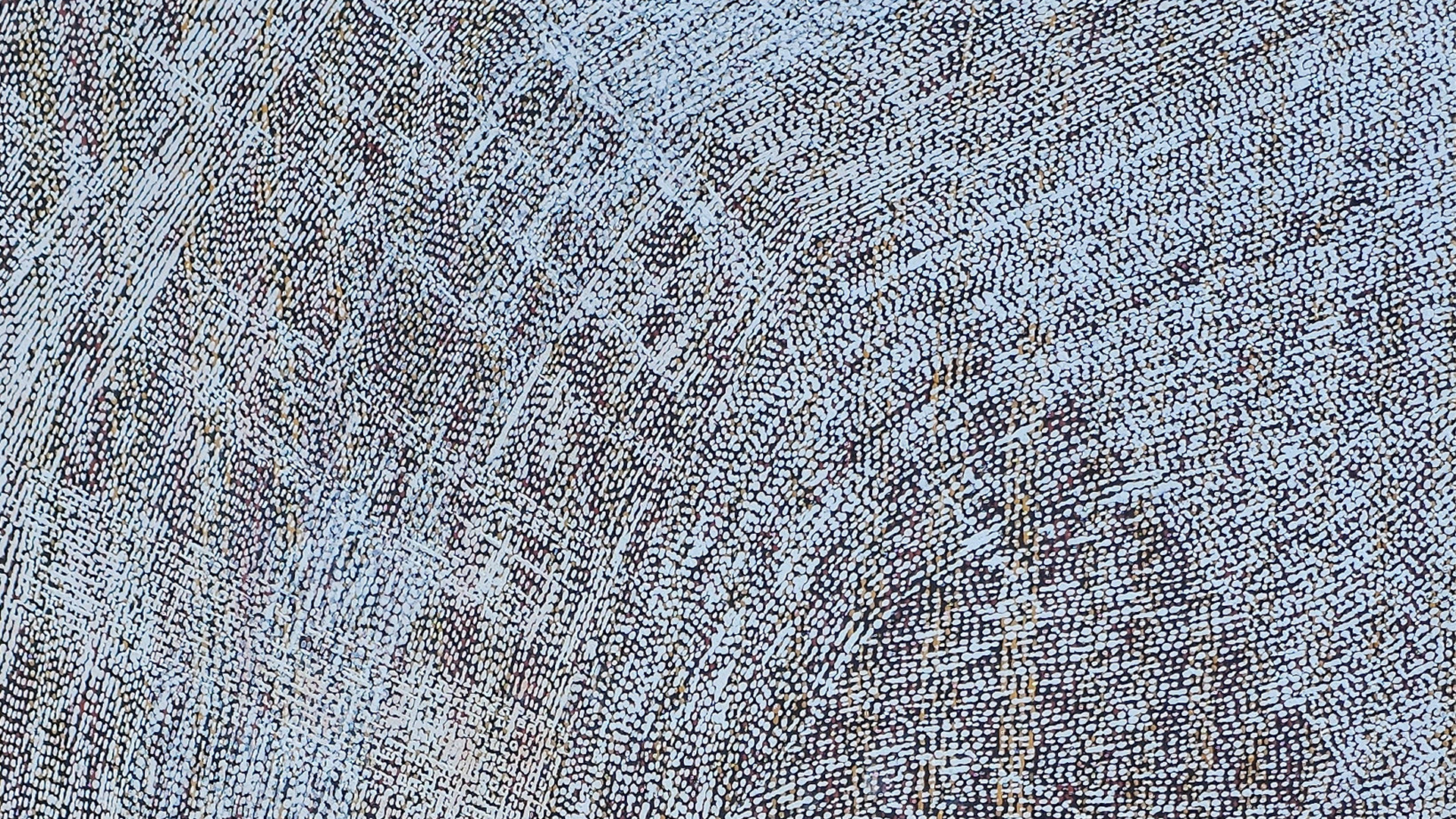
ARTITJA | ACROSS THE WATER
Across the Water unites the vibrant and culturally rich artworks of Tiwi Islands artists from Munupi Arts with those from remote community Aboriginal art centres in the East Kimberley, including Kira Kiro Artists at Kalumburu, Waringarri Arts in Kununurra and Marrawuddi Artists in Kakadu.
This exhibition features a diverse collection of paintings and sculptures, celebrating the interconnectedness and unique artistic expressions of four distinct First Nations communities.
Across the Water was first exhibited at the Early Works Gallery from June 8 to June 30 and is now presented through digital screenings daily on the City of Perth Urban Screens as part of the Goologoolup NAIDOC Screenings.
This Goologoolup screening is made possible with the kind assistance of Artitja Fine Art Gallery. Based in South Fremantle, Western Australia, Artitja Fine Art Gallery specialises in Australian Aboriginal Art. Celebrating its twentieth year in 2024, Artitja has developed ongoing, trusting relationships with over twenty Aboriginal-owned art centres in remote communities. The gallery continues to bring exciting Indigenous art directly from these communities.
Image credit:
Winga (2024), Delores Tipuamantumirri (Munupi Arts)
Image Courtesy of Artitja Fine Art
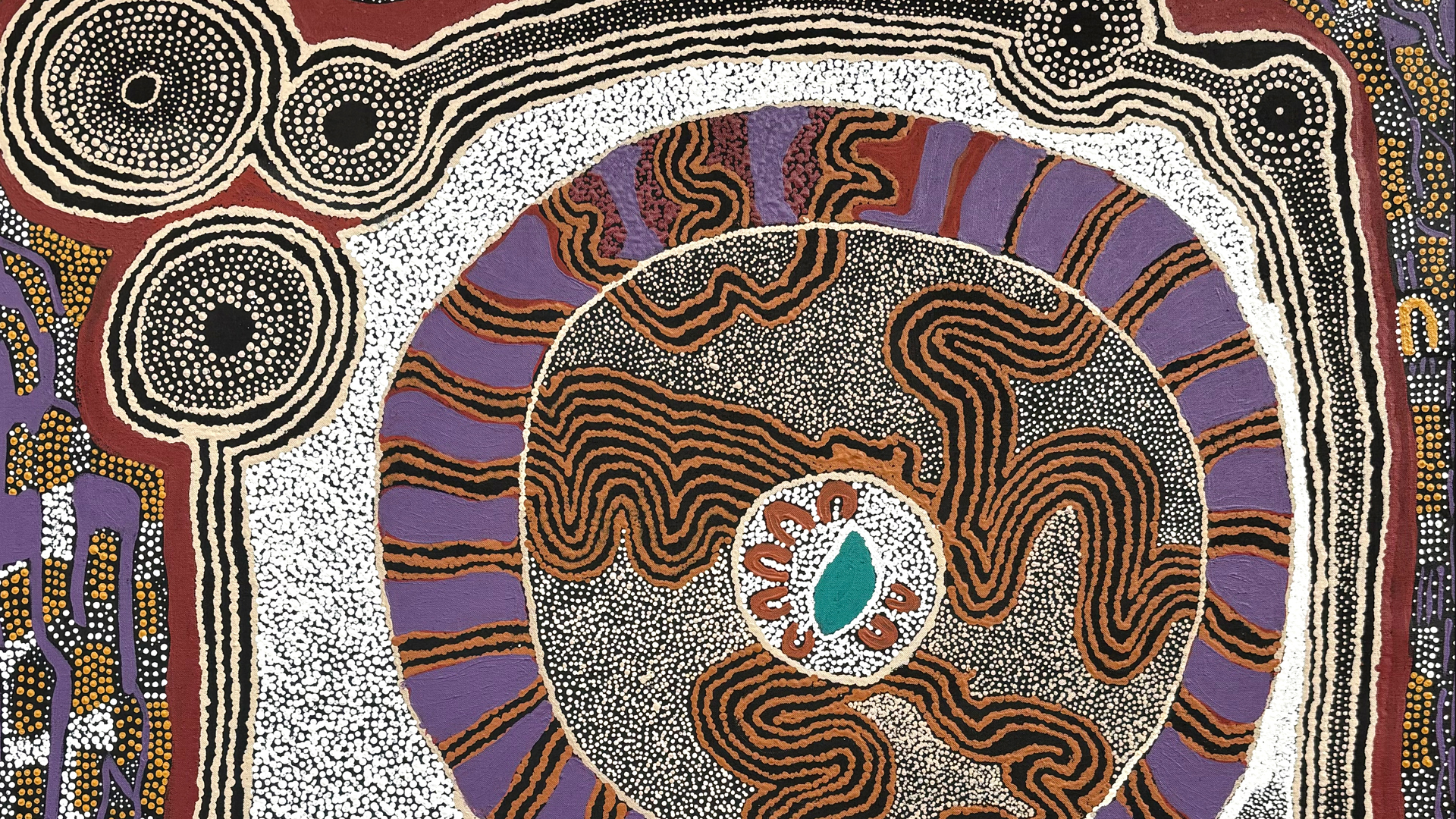
NINUKU ARTS
Ninuku Arts was founded in 2006 by a small group of Pitjantjatjara and Ngaanyatjarra artists in a small mud-brick building in Kalka Community, located in the far northwest corner of South Australia. Currently, the art centre supports a rotating roster of close to forty artists and makers living in both Kalka and Pipalyatjara, which are the most remote communities of the Anangu Pitjantjatjara Yankunytjatjara (APY) Lands.
Artists come to work on a near-daily basis and the studio is the social and cultural beating heart of both communities. It is a place not only to sit and work alongside family, but to gossip and share stories of near and distant past.
Over the course of the last decade the art centre has exhibited work nationally and internationally, becoming known for its powerful colour palettes as well as the diversity of styles, techniques, and mediums of each artist. Whilst the origins of Ninuku’s creative output lay in the traditions of Western Desert dot painting, artists have grown over time to incorporate loose brush techniques as well as tjanpi (grass) and punu (wood) sculpture into their practices.
Image credit:
Kungkarangkalpa (2024), Angkaliya Nelson
Image Courtesy of Ninuku Arts
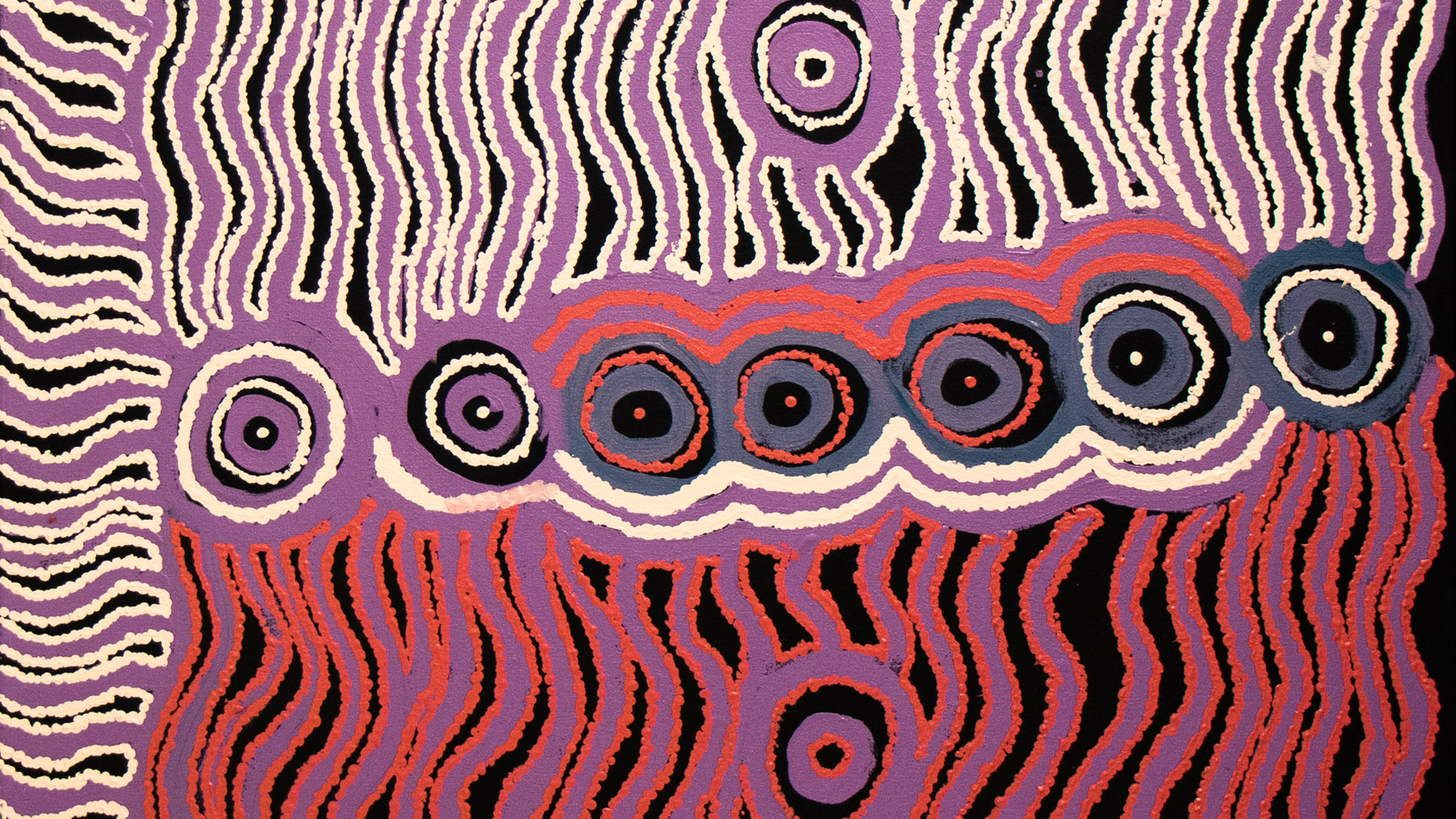
Tjarlirli and Kaltukatjara Art | CANVAS PIRNI PUKURLPA
Tjarlirli Art Centre represents artists from Tjukurla in the Ngannyatjarra lands of Western Australia, while Kaltukatjara Art Centre is based in Docker River, Northern Territory. Both art centers have strong ties to the Papunya Tula movement, as families relocated from Kintore and Kiwirrkurra to return to their homelands in the mid-1980s.
Tjarlirli & Kaltukatjara Art is recognised for producing culturally significant work by both elders and young artists who are passionate about continuing the traditions of their parents.
These two community-owned Aboriginal art centres are united by family and a shared commitment to preserving stories, culture, and history. They serve as places where artists paint, share stories, maintain their culture, and connect to Country.
Image credit:
Tali Tjukurpa – Joy Jackson (2024), Joy Jackson
Image Courtesy of Tjarlirli & Kaltukatjara Art
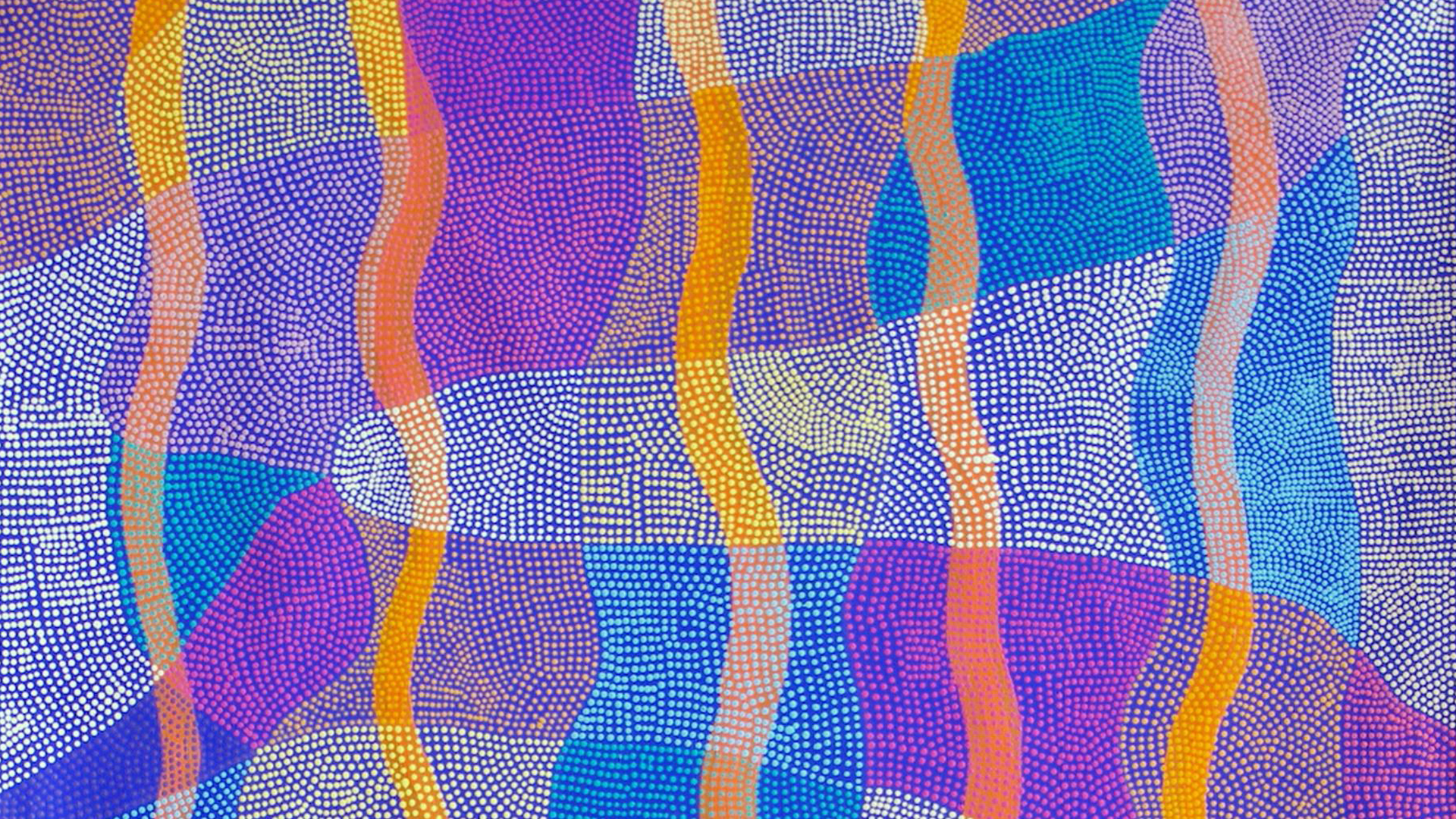
Ikuntji Artists
A lot of stories are still being recounted of long journeys of people from various language groups, who travelled from rockholes and waterholes to caves and mountains finally arriving at Haasts Bluff. The locals, the Luritja people of Haasts Bluff, were already here. Thus Haasts Bluff is a community rich with diversity in language and culture.
Ikuntji Artists was first established in 1992; the artists draw their inspiration from their personal ngurra (country) and tjukurrpa (dreaming). They interpret the ancestral stories by using traditional symbols, icons and motifs. The artistic repertoire of Ikuntji Artists is diverse and includes for example: naive as well as highly abstract paintings told by each artist in their personal signature style. Throughout the 27 years of its existence, the art movement in Ikuntji has flourished and constantly left its mark in the fine art world. At the same time, the art centre has been the cultural hub of the community, maintaining, reinforcing and reinvigorating cultural practices through art-making.
Today Haasts Bluff has a population of around 150 people. Ikuntji Artists has eight key artists, who exhibit in Australia and internationally, and are represented in major collections across the globe.
Image credit:
Pirrnpirrnga – Desert Bore (2021) Ann Lane
Image Courtesy of Ikuntji Artists
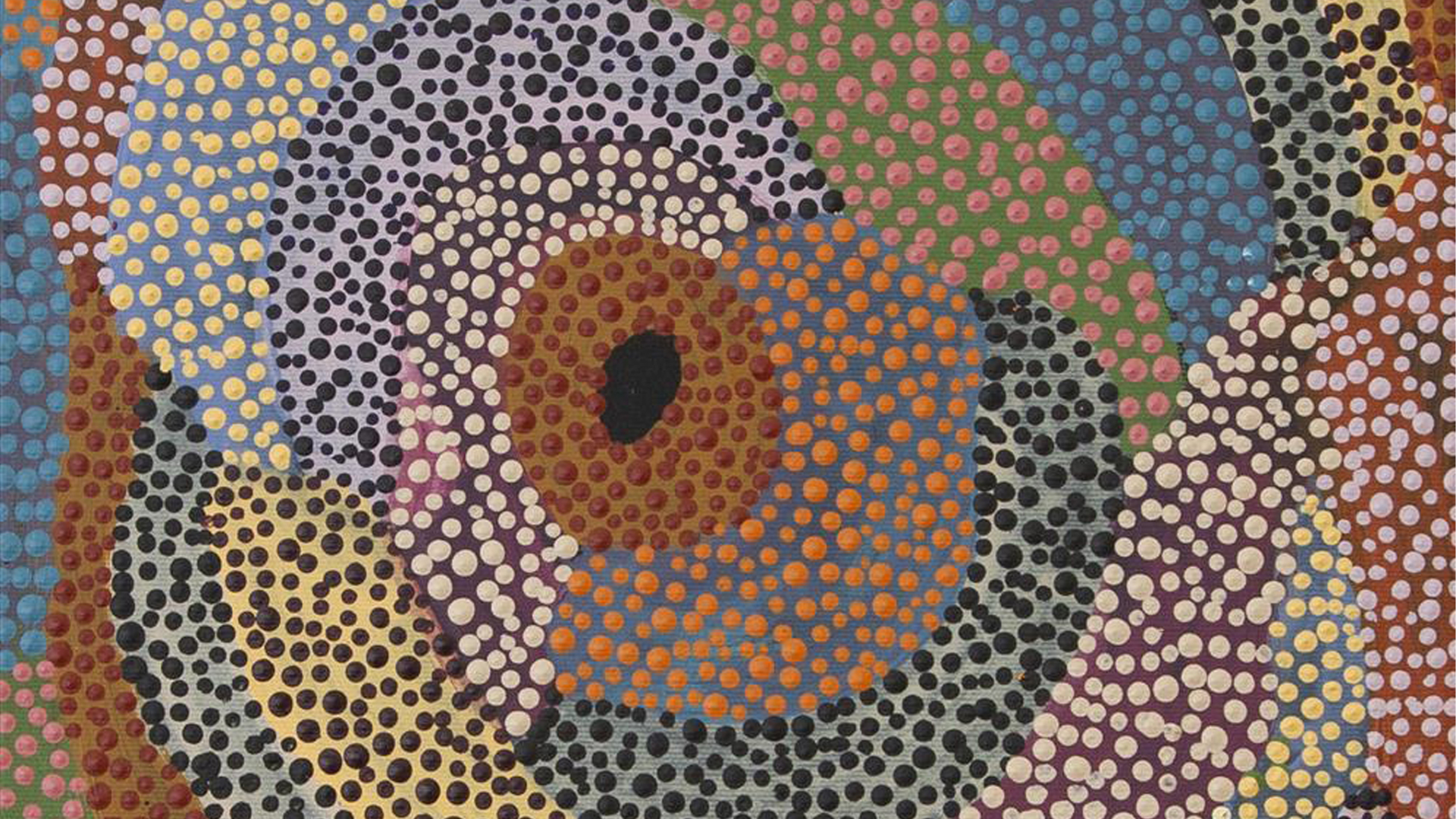
Martumili Artists | Kujungka
Kujungka is the third exhibition following Mirrka (2023) and Waru (2022), which respectively celebrated many of the bushfoods that have sustained Martu people over thousands of years, and the importance of traditional fire knowledge.
Kujungka means ‘as one’ or ‘together’, and it holds a special place in the heart of the Martu community. The concept of kujungka resonates through every aspect of Martu life, from the ancient practices of the pujiman (traditional, desert dwelling) era to contemporary community living and cultural expressions. This spirit of togetherness has enabled Martu to endure and thrive despite the immense challenges posed by colonisation and modernisation.
Martumili Artists was established by Martu people living in the communities of Parnpajinya (Newman), Jigalong, Parnngurr, Punmu, Kunawarritji, Irrungadji and Warralong, and it draws on strong influences of aboriginal art history. After long and cautious observation of other desert artists’ experiences of the art market.
The artists and their families are the traditional custodians of vast stretches of the Great Sandy, Little Sandy and Gibson Deserts as well as the Karlamilyi (Rudall River) area.
Image credit:
Punmu Waterholes (2024), Marianne Burton
Image Courtesy of Martumili Artists
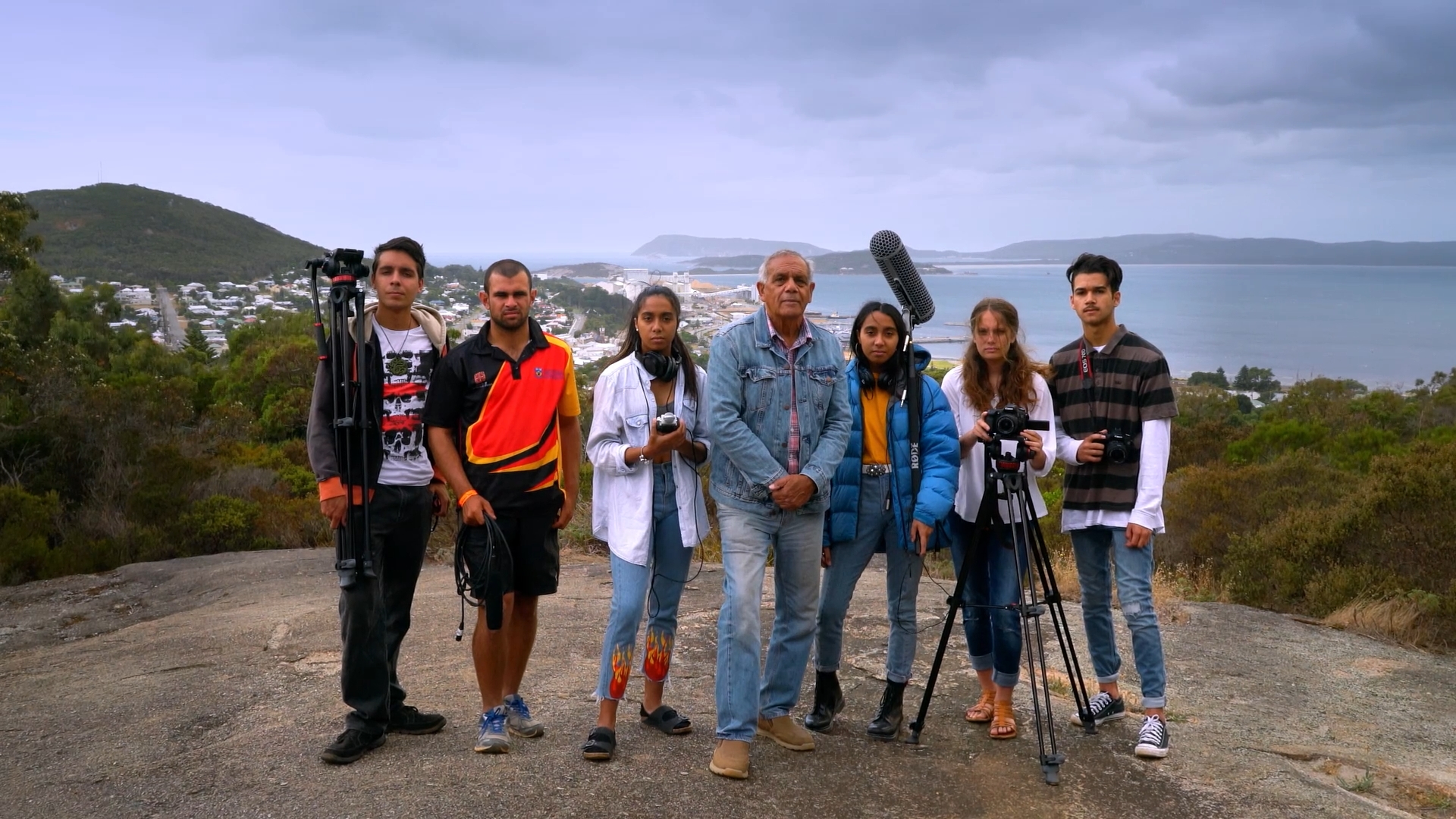
COMMUNITY ARTS NETWORK | DOCUMENTARY
Community Arts Network (CAN) present two narrative documentaries from the archive: Welcome to Balardong, a delightful yet poignant oral history from the town of York in Balardong set to stop motion animation, and Noongar Boodja (Noongar Country), created by young Aboriginal people from Albany.
True to its roots planted firmly in the social activism of the 1960s and the early international community arts movement, CAN slates projects where the creative process drives the change it wishes to achieve. Often, as with these documentary films, the process not only resonates deeply with the community, but the resulting works find their place on national and international stages.
Welcome to Balardong | York
The Welcome to Balardong animation was produced during CAN’s Rekindling Stories on Country program in York.
Noongar Boodja | Albany
Noongar Boodja is a documentary made by young Aboriginal people from Albany.
This stunning cinematic story with Noongar Elders explores significant places, their Noongar names, and culture in Albany and surrounding areas.
Image credit:
Noongar Boodja film still
Community Arts Network
other screenings

Makuru Tv
This program is a collection of slow nature footage taken down in the Serpentine National Park, in Gnaala Karla Boodja, showing the changes in the landscape during the Noongar Season of Makuru.

Makuru sunset
This program is a sunset over the Derbal Yaragan (Swan River) in Mosman Park.
The Noongar season of Makuru, represented by the colour dark blue, symbolises the rain and chilly weather characteristic of this period. During Makuru, the South West experiences its coldest and wettest months. Traditionally, this season was a favourable time to move back inland from the coast as the waterways and catchments began to fill. This ease of movement facilitated a shift in dietary sources from sea, estuarine, and lake foods to land-based provisions, particularly grazing animals like kangaroos.
The slow TV genre, known for its contemplative pace, offers viewers an unedited, real-time experience of life’s rhythms, presenting a peaceful alternative to the fast-paced narratives of mainstream media. It encourages viewers to relax and immerse themselves in the season’s inherent beauty.
SCREENING SCHEDULE
NORTHBRIDGE PIAZZA SUPERSCREEN
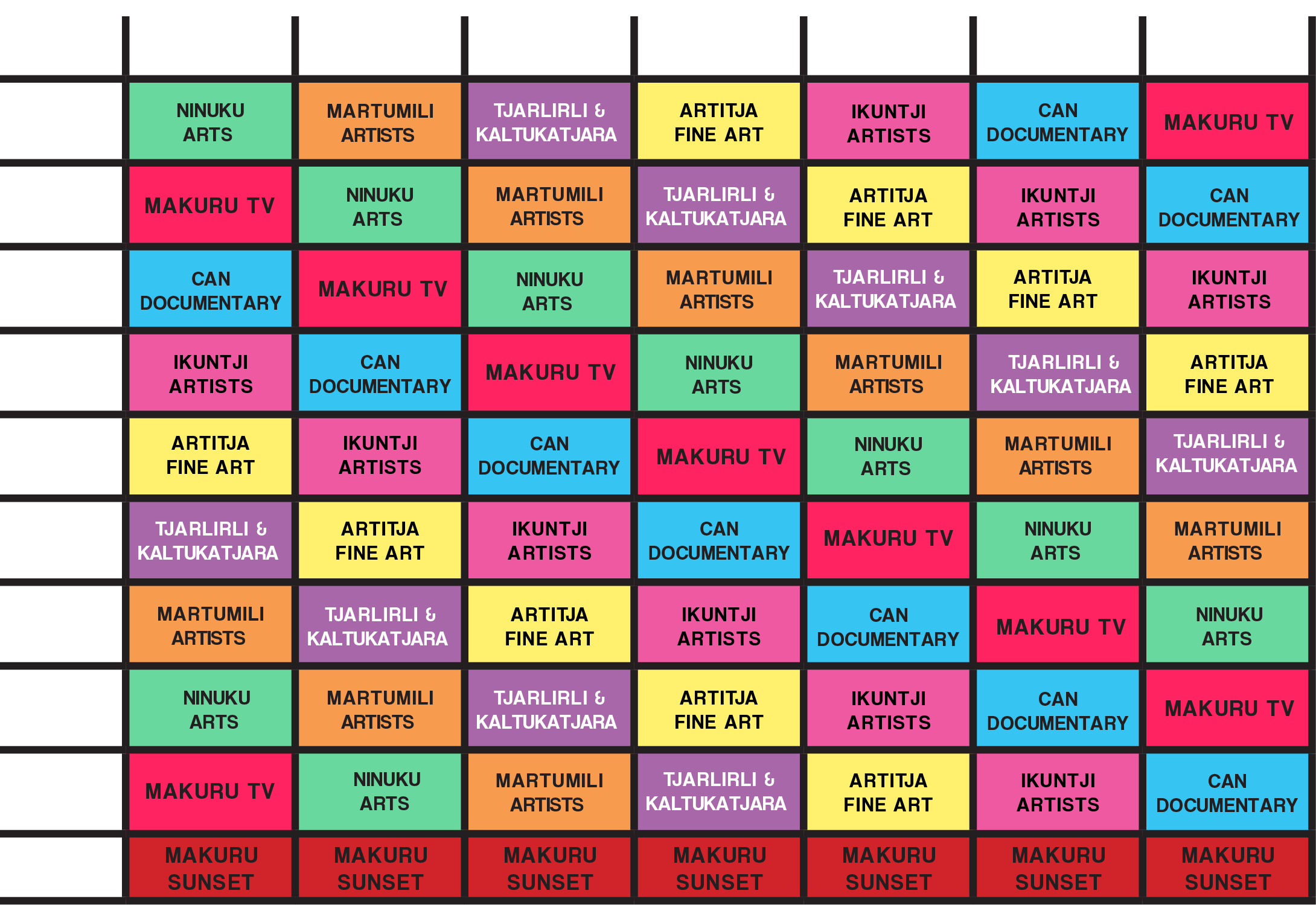
FORREST PLACE ARTS SCREEN
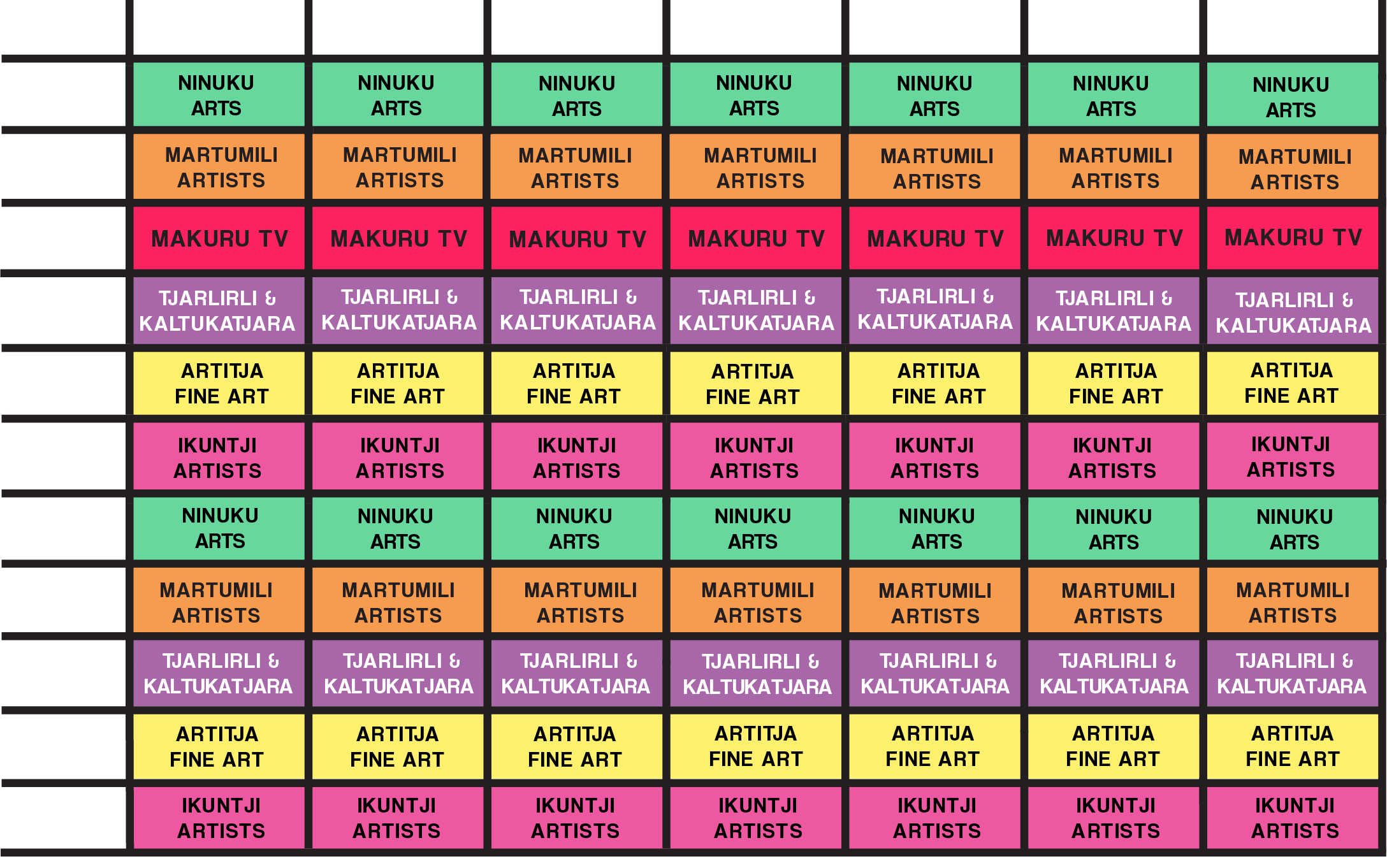
Screenarts acknowledges the Whadjuk people of the Noongar nation as the traditional custodians of this country and its waters, and that we operate on Noongar country.
We pay our respects to Noongar elders past, present, and emerging.
Always was and always will be Aboriginal land.
